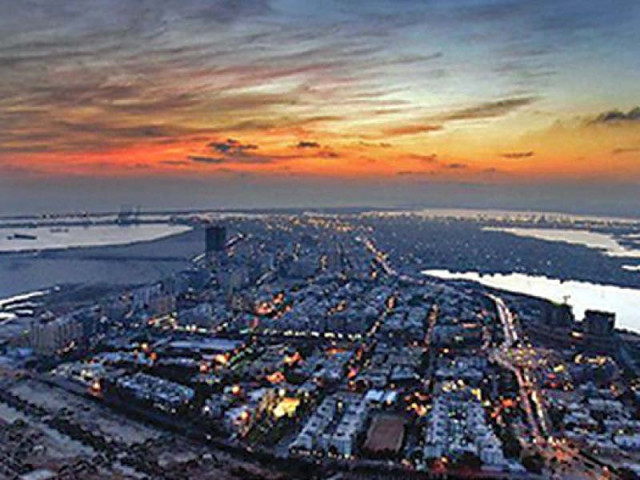FY23 – a year of consolidation
Political noise, high inflation may disturb economic momentum

Fiscal year 2022-23, which has started on Friday, will be a year of consolidation for Pakistan’s economy.
Slowing economic activities are expected to hit the bottom and then bounce back during the year as the PML-N led coalition government has started taking corrective measures.
The political noise ahead of the general elections in the second half (July-December) of 2023 may continue to disrupt the economic momentum during the new fiscal year.
It will remain a challenging year for the government in terms of controlling the high inflation as the average inflation is anticipated to hit 16% in FY23 compared to around 11% in the outgoing fiscal year.
The recent change of base year may push inflation to its peak in August 2022, from where it would start falling from September onwards and may “drop to 10% by the end of June 2023,” prominent businessman and stockbroker Arif Habib said while talking to The Express Tribune.
The Pakistan Stock Exchange (PSX) may also remain under selling pressure in the initial couple of months of the new fiscal year, but later it may rebound on the easing of inflation reading.
“We may target 20% growth in the benchmark KSE-100 index in FY23,” he said.
The rupee would recover and stand below Rs200 against the US dollar after the IMF disburses the next loan tranche worth around $2 billion by the end of July 2022.
It, however, “may see an average 5-6% deprecation (to around Rs211 against the greenback) by the end of fiscal year in June 2023,” he added.
Arif Habib Limited Head of Research Tahir Abbas added “the economic growth would slow down to 3% in FY23 compared to around 6% in FY22.” The government has set the target of economic growth at 5% for the year.
The government’s measures to cool down the overheated economy would slow down activities in the industrial sector, particularly in the large-scale manufacturing (LSM) sector, and lead to shrinking of services sector as well.
“The two sectors (industrial and services) have a combined 80% share in GDP (gross domestic product),” Abbas said.
The third and the last major sector of the economy, agriculture, would continue to maintain current fine trends, as low availability of water, availability of quality cottonseeds, availability of affordable fertilizer and “most importantly the announcement of support price (minimum purchasing price) for major crops like wheat and sugarcane would determine growth in the overall agriculture sector in FY23,” he said.
Habib, who is also a member of Prime Minister’s Economic Advisory Council (EAC), said that the uptrend in global commodity prices would start easing down in a few months.
“The average price of Arab Light crude oil (which Pakistan imports) may fall in range of $80-85 per barrel in FY 23 compared to around $95 per barrel in FY22.” The share of fuels in the entire import bill stood at 25% in FY22.
The interest rate may largely remain unchanged at around current level of 13.75% during the entire new fiscal year 2022-23.
“The central bank may consider revising down it after inflation dips,” he said.
He said Pakistan’s economy had come under pressure due to worsening of external factors (sharp drop in country’s foreign exchange reservices amid stalling of IMF loan programme in FY22).
The revival of IMF loan programme soon would increase foreign financing flows into Pakistan not only from IMF, but from other multilateral, bilateral lender and friendly countries including World Bank (WB) and Asian Development Bank (ADB), the seasoned businessman said.
“Pakistan has successfully averted the likely default on international payments (like Sri Lanka encountered) after the government took right economic decisions,” he said.
China has rolled commercial loans of $2.3 billion.
With this, the foreign exchange reserves have returned into double-digit at $10.3 billion at present.
He said the fiscal position of the government would improve significantly after it withdrew subsidies on petroleum products and electricity.
“Besides, the super tax on corporate sector would contribute notably in strengthening fiscal side of the government,” he said.
In addition to this, a significant cut in import of Covid-19 vaccines and plant and machinery for industries – after the end of subsidized industrial investment scheme namely TERF (temporary economic refinance facility) – would also help improving government fiscal position and reduce current account deficit.
The current account deficit is expected to narrow down to $11-11.5 billion in FY23 compared to estimated $16 billion in FY22.
Export earnings may, however, take a hit due to likely global recession. This should also shrink import bill of the country as well, he said.
PSX to go up 20%
Habib said Pakistan Stock Exchange (PSX) should recover 20% (or over 8,000 points) in FY23.
It reduced 12.3% in the previous fiscal year 2022 to 41,541 points on Thursday, down by 32% in US dollar value.
He said the oil and gas exploration and production sector, banks and fertilizer sector would lead the anticipated rally at PSX in FY23.
Later on, the cement sector may also join the rally once inflation eases down and construction activities are take-off again.
Rupee to fall 5-6%
The rupee may soon recover to below Rs200 against US dollar and record an average depreciation of 5-6% to Rs211 in FY23.
Cumulatively, in the outgoing fiscal year, the rupee slumped a record 30% to Rs204.85 on Thursday compared to the close of Rs157.54 a year ago on June 30, 2021.



















COMMENTS
Comments are moderated and generally will be posted if they are on-topic and not abusive.
For more information, please see our Comments FAQ